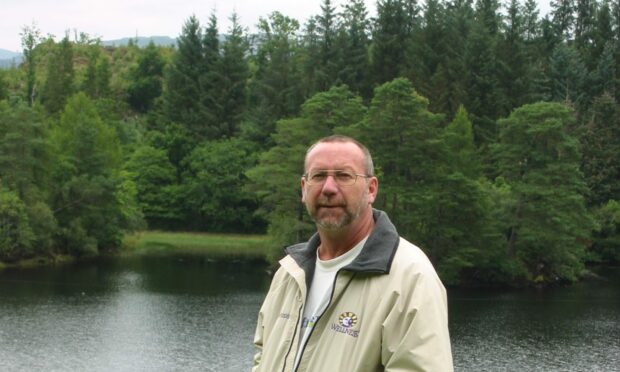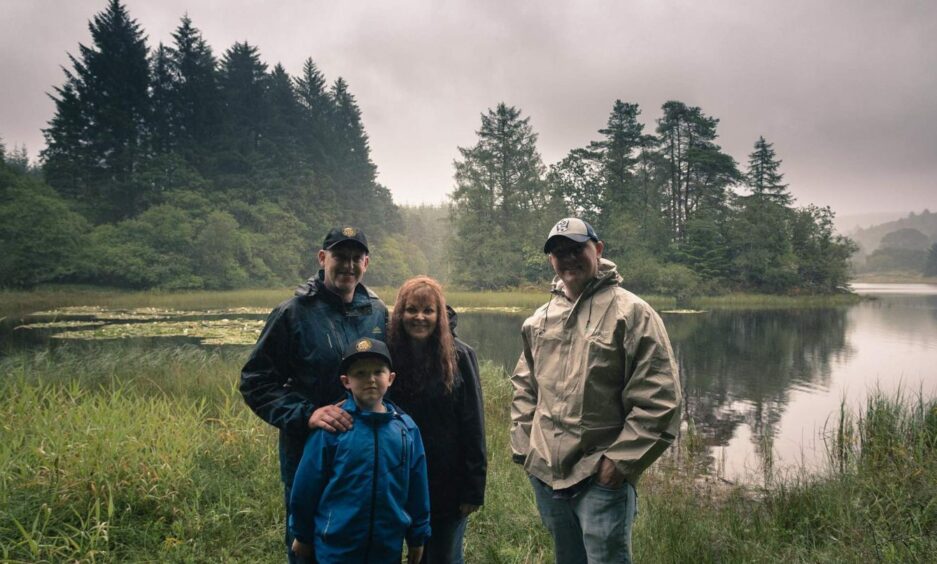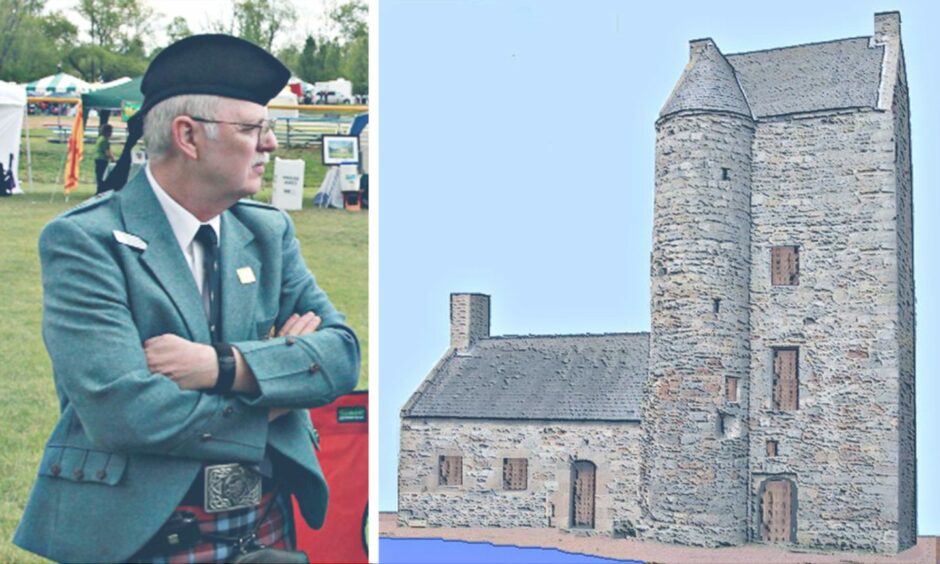Members of Clan MacTavish from all over the world have been flocking to visit the newly discovered ruins of their famous clan seat in Argyll.
And now, Clan Chief Steven MacTavish is working with members to have an official memorial plaque to mark the spot.
The ruins of the ancient castle were revealed for the first time in 200 years recently when the Crinan Canal was drained for maintenance work.
It was always known that Dunardry, where the small freshwater Loch A’bharain (Loch of the Barons) is situated, was a MacTavish stronghold.
But it wasn’t until last year, when the canal was empty for an extended period of time, that the foundations were finally seen.
The ruins are under the loch again
When the £3.7million project to replace lock gates was completed, the canal was re-filled.
Since then, ancestors of MacTavish have been making the journey to see the loch for themselves.
Robbie MacTavish, 38, who lives in Lochgilphead, has been acting as their unofficial tour guide.
Kathy Guetersloh, 64, and her son Jakob 25, live in Illinois, USA. They visited the loch this summer. Kathy said: “My mother was a MacTavish.
“Robbie took us to the loch and showed us where the castle is. He said when the water is clear, you can sometimes see its outline.
“There is nothing to tell you it’s there. It needs a plaque. On one hand, it would be great, because it would bring a lot of tourism. On the other hand, maybe you don’t want to bring too many people there?
“It is a special place.”
Robbie expects to see more Clan MacTavish visitors in future
Robbie added: “I met Kathy through the Clan MacTavish Facebook group by sharing my photos of the area.
“I’ve always been keen to be the boots on the ground for any of the members thinking of visiting or who want to know more about the MacTavish history here.
“I know of many MacTavishes from all over that have already visited but I think we will see many more in the future.”
For hundreds of years, the small castle or keep, sat proudly by the freshwater Loch A’bharain (Loch of the Baron).
It was last inhabited by Lochlann MacTavish around 320 years ago, but was settled by MacTavishes as far back as around 893AD, more than 1,000 years ago.
Clan Chief Steven MacTavish has yet to see the ruins for himself.
He said: “My last visit to the loch was in 2012 but I had been there several times previously starting with my first visit in 1996.”
He said the clan President, Dr Joseph Cash, has been speaking to Historic Environment Scotland and Scottish Canals about installing a plaque at the site.
The chief added: “We have briefly discussed our preferred locations for the informational plaques at Loch á Bharain, somewhere alongside the tow path at the loch.
Information and diagrams to mark the spot by the loch
“As yet we have not talked about what information we would like to have on the plaques. But I would think it would include some historical Clan MacTavish information and diagrams or photos of the ruins.
“We will also consult with our Clan Seannachie, Patrick Thompson, author of The History of Clan MacTavish, prior to any final decisions.
“There is a very keen interest about having another clan gathering or trip.”
Texan Jonah MacTavish Slaton has visited Argyll to see his family roots many times over the years.
He said that prior to 2021, most clan members who visited Dunardry had no idea where the castle once stood.
Jonah said: “That is until Loch A’bharain was drained in 2021 and the foundation of the keep was discovered.
“Now we, of MacTavish descent, have the exact location to the castle of our ancient clan. This is the largest archaeological discovery in the history of Clan MacTavish.
“Let’s not wait another 200 years to celebrate the location of Clan MacTavish’s castle.”
Are you interested in more exclusive and breaking Highland and Islands news from the P&J? If so, why not join our dedicated Facebook page here





Conversation